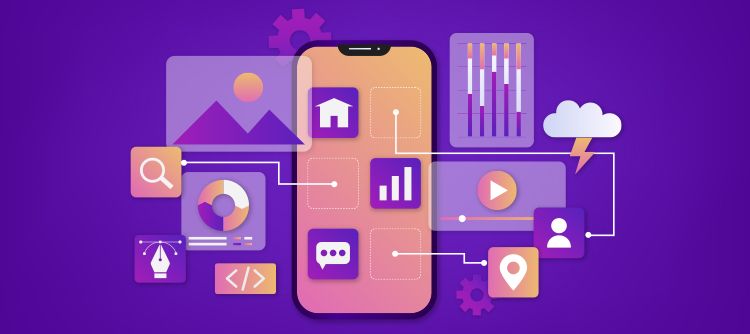
Subscribe to our Blog
We're committed to your privacy. SayOne uses the information you provide to us to contact you about our relevant content, products, and services. check out our privacy policy.

Sayone technologiesFebruary 3, 20234 min read

Generating table of contents...
For mobile apps to be successful in the market today, it is essential to choose the most suitable mobile app architecture. Many apps fail in the market because of poor architecture. In this blog post, we attempt to provide an overview of mobile app architecture principles that will help to build a successful mobile app.
It is not by accident that every popular Android and iOS application in the market has a very reliable mobile app architecture. In such apps, every component is built well because the creators very well know that even a very small problem that has not been taken care of when building the app undermines its ultimate quality.
The mobile app architecture encompasses all the parts of the app – all the questions about why what, and how of the app – including what data is collected, how the data moves, what the app looks like, for what platform, and using what tech stack. Missing even a single important element while creating the mobile app architecture, the project will likely be in peril. The complexity of building the architecture is proportional to the size of the application. However, the proper architecture allows great savings in terms of time, energy, and costs in the future.
Download our eBook for FREE: “Global Software Development Rates – an Overview”.
A lack of architecture in a mobile app results in an app:
The most popular mobile app architecture is represented using 3 layers: presentation, business logic, and data.
Apps developed specifically for Android are native apps developed for a specific mobile platform. These apps support Android languages (Kotlin and Java) for devices from different manufacturers including Samsung, Google, Sony, and Nokia. The most commonly used Android architecture for mobile apps is ‘Clean Architecture’. Clean architecture focuses on the same 3 layer structure.
Read our blog on “Challenges Faced in Mobile Application Development”.
Native iOS apps are developed with Objective-C and Swift languages, and Apple provides clear best practices over app architecture and the MVC model (Model-View-Controller). It supports rapid and parallel development, with the ability to create multiple views.
Hybrid mobile apps work in a manner to leverage native and web solutions. They use native apps as “shells” for the back end and platform-neutral JavaScript, HTML, and CSS for the front end. Hybrid apps use plugins like Apache Cordova /Ionic Capacitor to access native platform features. They can be created fast and are easy to update. They are inappropriate for interactive, complex, or feature-rich applications.
 Cross-Platform Application Architecture
Cross-Platform Application ArchitectureCross-platform development leverages a common codebase having platform-specific abilities in each native shell. These apps use React Native, Xamarin, etc. Cross-platform apps offer a native-like UX.
Some things to look for finalizing the design of mobile app architecture:
The success of a mobile app requires careful consideration of architecture and also the tech stack. If you assume incorrectly, all your efforts will result in an app that fails to meet expectations.
Looking for web or mobile app development services? Get in touch for a free consultation with our experts.

We're committed to your privacy. SayOne uses the information you provide to us to contact you about our relevant content, products, and services. check out our privacy policy.

About Author
Fuelling Happiness.

We collaborate with visionary leaders on projects that focus on quality